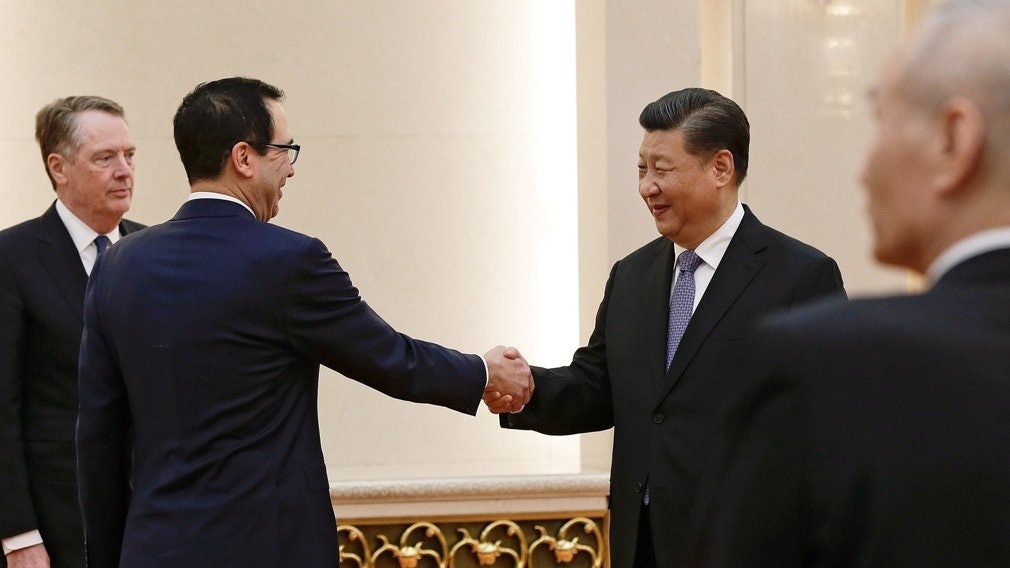Some media reports said that the new requirements of the United States in the latter part of the negotiations led to the breakdown of the negotiations, and some requirements may even directly affect China’s social and political stability. So, who is behind the scenes affects US trade negotiations.
At the time of the breakdown of China-US trade negotiations, the Trump administration and Beijing each insisted on the statement of who first repented. The Chinese government has also increased its public opinion against the United States. According to the information that the media have learned, some of the key obstacles to the breakdown of China-US trade negotiations are mainly from the pressure from the United States, including the list of wishes to China when the trade war broke out last year. Some of the requirements are almost identical to Some of the new requirements that changed China’s economic system and later in the negotiations were even considered by Beijing to directly affect China’s social and political stability.
During the 10th round of trade negotiations between China and the United States held in Beijing on April 30, under the proposal of the Chinese side, Deputy Prime Minister Liu He and US Treasury Secretary Steven Mnuchin and trade representative Robert Lighthizer were on the two sides. In addition to the formal negotiations, a three-person and one Chinese translation held a closed-door communication for about an hour. It is also this “closed-door communication” that has changed the overall atmosphere of China-US negotiations.
According to the media quoted people who were waiting outside the conference room, the three people were serious and frustrated when they walked out of the room and did not provide any communication or instructions to their assistants. The negotiating hall was filled with the breath of the rain, and no one dared to ask what happened.
Five days later, on May 5th, US President Donald Trump released Twitter, announcing the increase of the tariff rate of $200 billion on Chinese goods from 10% to 25%. At the same time, the White House used all media public relations resources to emphasize China’s compression of negotiations and comprehensive remorse.
However, according to sources quoted by the South China Morning Post and other media,The real reason for the breakdown of the negotiations is that the United States has been changing its requirements, including new requirements, such as requiring China to fully open its network, loosening control over data storage for foreign cloud computing enterprises, and requiring China to increase imports of US$100 billion annually ; Establish a strict system that does not allow China to manipulate the RMB exchange rate ; require a monitoring mechanism to track and ensure that China implements trade agreements, and clearly stipulates in the trade agreement that if the US is not satisfied with the implementation of the agreement, the US will re-establish Chinese goods, add tariffs.
Responding to these demands of the US is in Beijing’s view that it is tantamount to signing an “unequal treaty” as required by the US.
All of China’s new requirements are rejected. According to sources, in order to reach an agreement, both China and the United States should look at the issue from the perspective of the other side. The United States needs to understand that it will take some time for China to implement the relevant commitments. If the United States refuses and asks China to make immediate changes, then There is no way to proceed with the negotiations.
On May 27, Trump mentioned in a joint press conference with Japanese Prime Minister Shinzo Abe that the United States is “not ready” to sign an agreement with China, but the two countries will reach a certain time in the future. A “great trade agreement.” In an interview with “Hawthorne News” before visiting Japan, Trump made it clear that he did not want to reach a five-fifth agreement with China and only hoped to reach an agreement favorable to the United States.
It seems that the stalemate between the two sides of the trade war seems to be difficult to break. Whether it is a tariff trade war or a science and technology game around the Huawei ban, China and the United States are basically in a collision between two different ideologies.
The United States demands that China fully open its network, not giving time for China’s gradual reforms, and forcing the addition of unilateral provisions. These are likely to be proposed by those who have strong ideological discrimination against China, such as Navarro, a trade consultant. Peter Navarro) and Steven Bannon, a former strategist who constantly influences the Trump administration.
If the United States really puts forward these demands, then the negotiations between the two sides will no longer be trade negotiations. Even trade negotiations are not fair negotiations.
Of course, there are many factors influencing the negotiation process and outcomes of the US, such as the US Congress, which is tough on China, and the Trump re-election team, which has been advising from the election perspective. Therefore, the Trump administration has not yet had a person in charge who can master the general direction of China policy.
In this trade negotiation, the US was under the responsibility of Commerce Minister Wilbur Ross, Treasury Secretary Mnuchin and Trade Representative Letshize. This kind of chaos, coupled with Trump’s fickleness and disagreement with the internal team, eventually forced China to stop negotiations, to statically brake, to defend against the attack.












